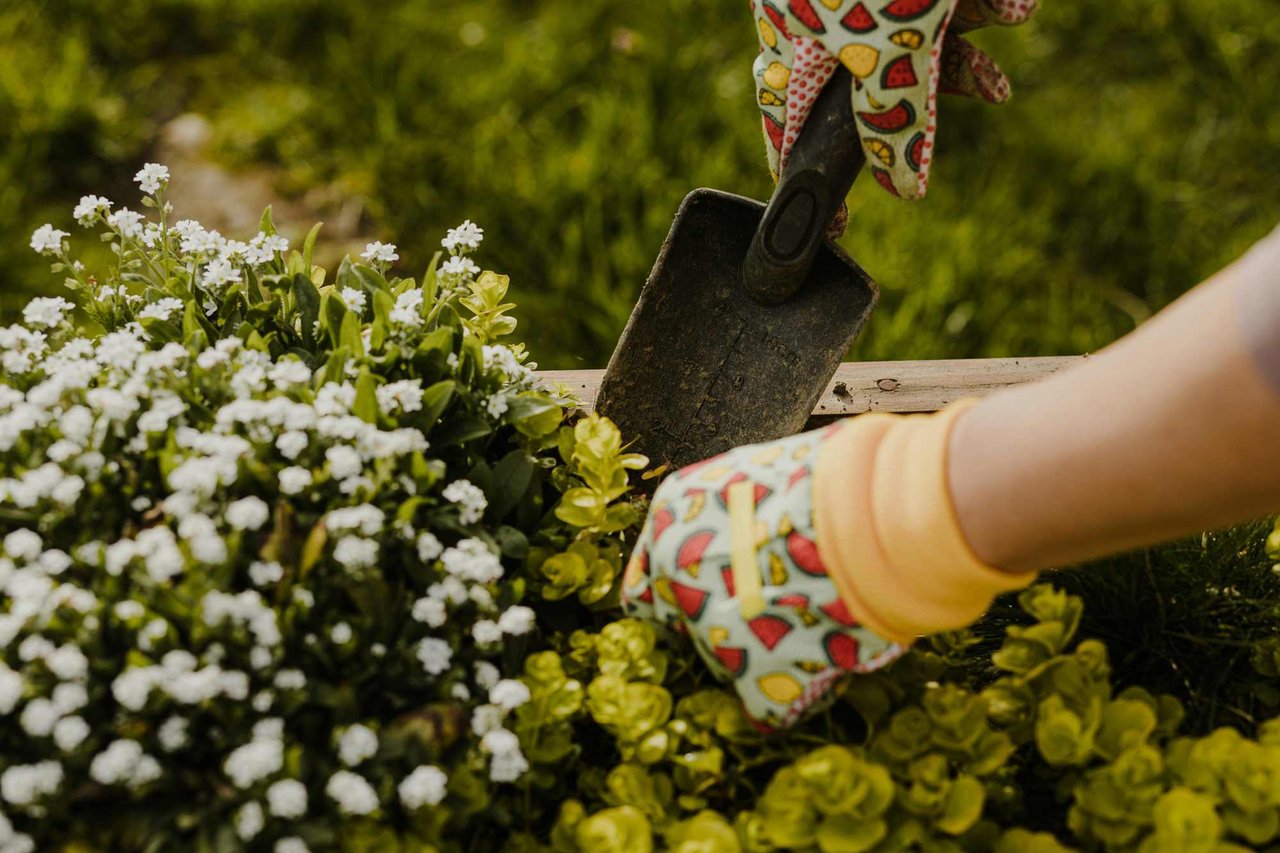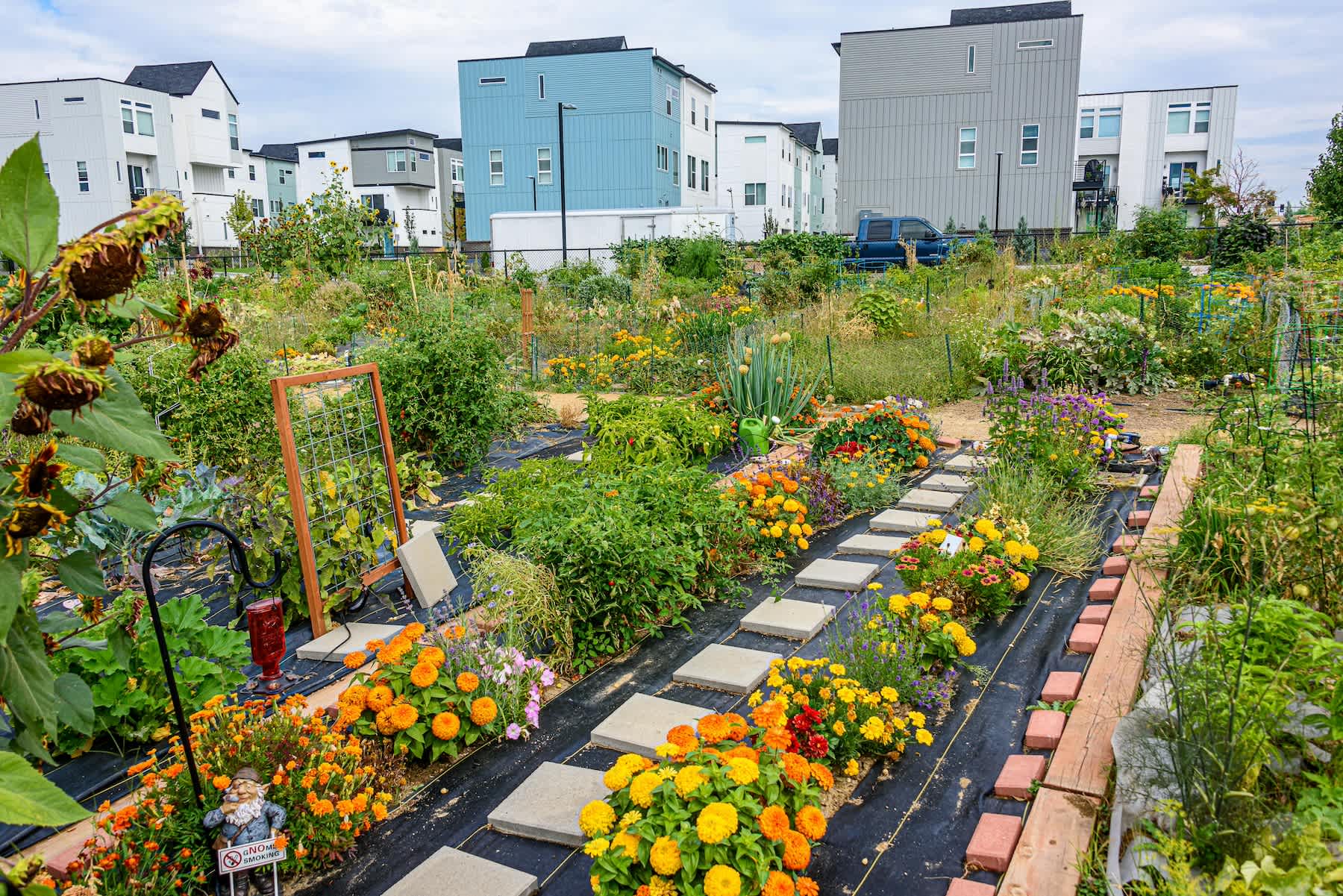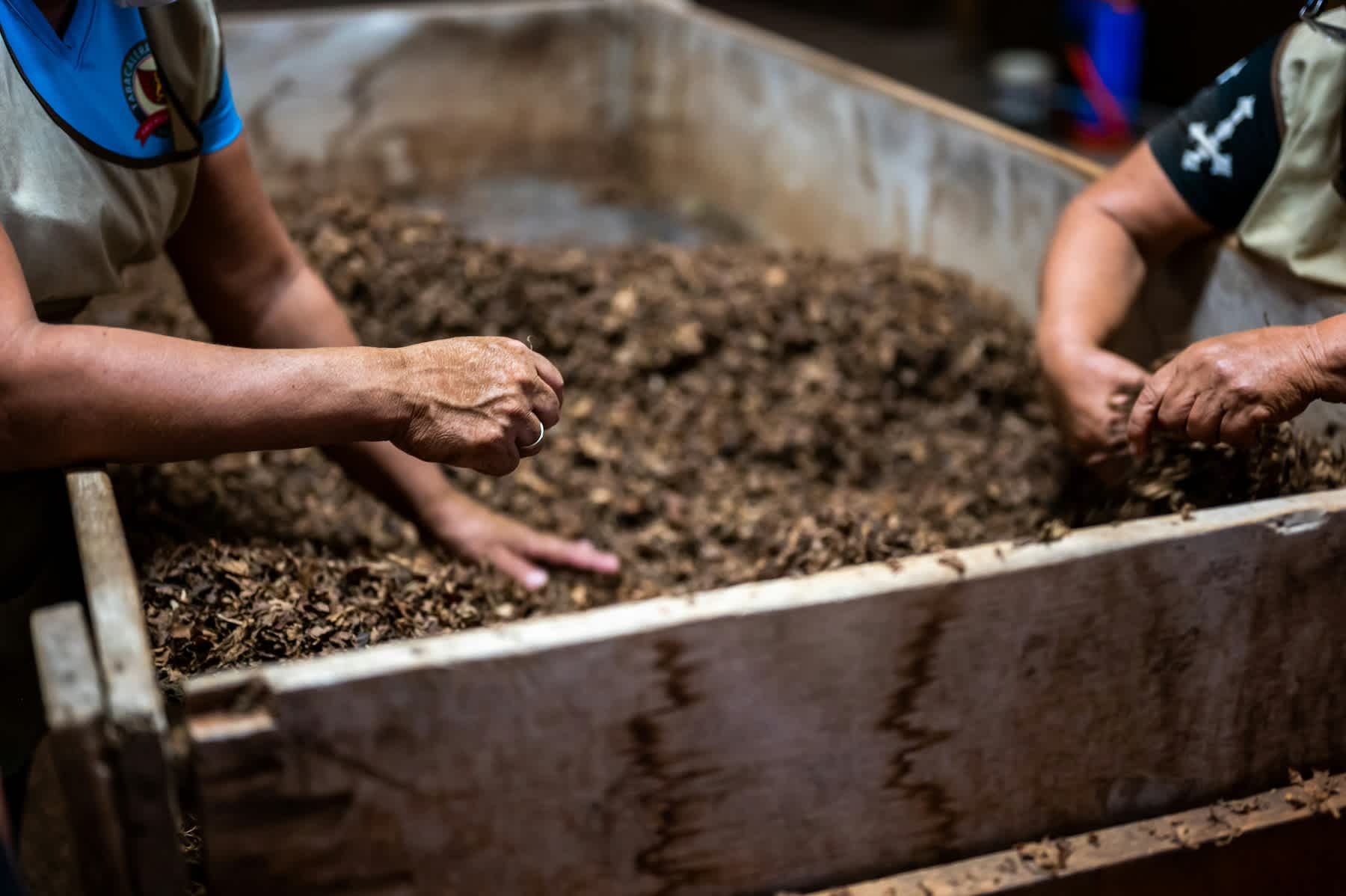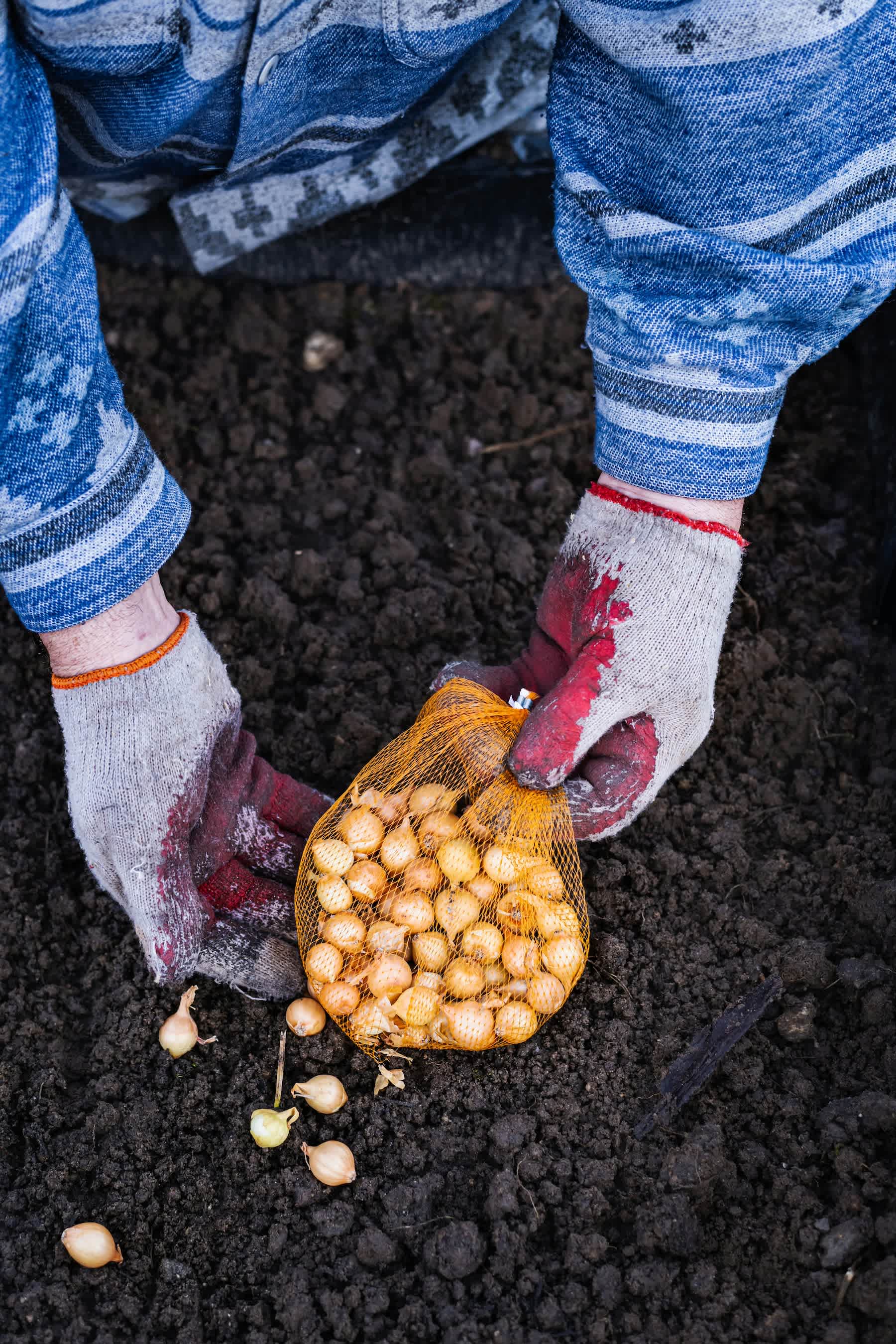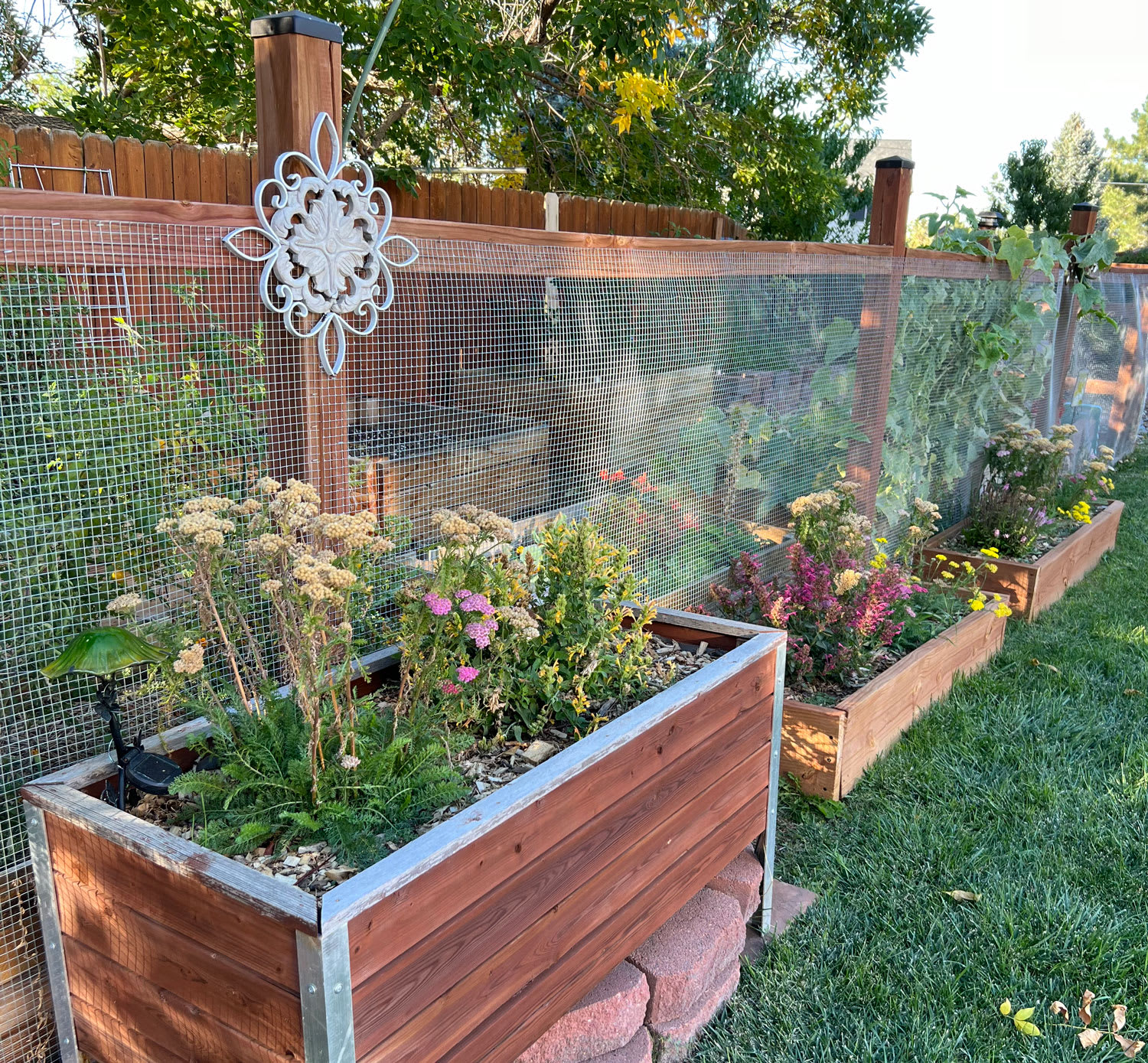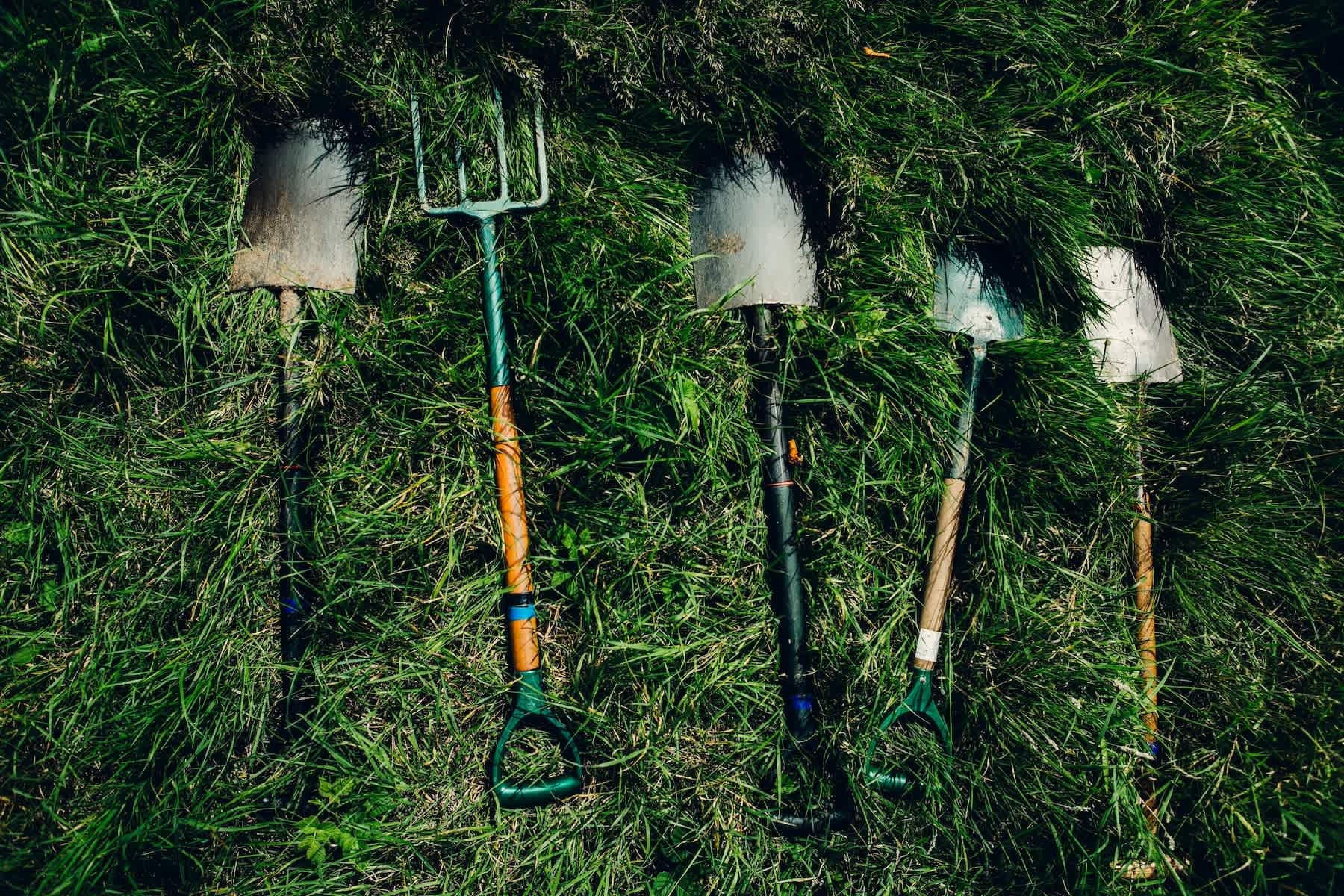Fall into Gardening: Colorado Garden Tips and Guide Before the Winter
7 Steps to Transition Your Garden for Cooler Temperatures this Fall
Rankin, Goulder, Kissinger
We love our outdoor living spaces and gardens in Denver and we also love this time of year with the changing seasons!
The seasonal shift in Colorado is an exciting time for Coloradans. With the change of season comes new adventures, hopes and ambitions for the season ahead. For Colorado's passionate gardening community, this seasonal transition is particularly significant. Fall is a crucial time for gardeners to prepare for the harsh winter ahead and lay the groundwork for a bountiful spring. The tasks undertaken now will have a profound impact on the success of next year's garden.
As temperatures begin to cool, here are seven steps and tips to prepare your Colorado garden for fall ahead of the winter:
Above: With proper care in the fall, Colorado gardeners can have a bountiful and beautiful spring garden.
Step 1: Clean and Clear
This crucial step helps prevent pest and disease issues from carrying over to the next growing season. Begin by removing any dead or diseased plant material, including leaves, stems, and fallen fruit. These can harbor harmful pathogens or overwintering insects. Next, pull out annual plants that have finished producing - they've completed their lifecycle and won't survive the winter anyway.
Be sure to gently shake off excess soil from the roots to return nutrients to your garden beds. Pay special attention to any plants showing signs of pest infestation or disease. These should be carefully removed and disposed of properly, ideally in sealed bags. This prevents the spread of problems to other plants or reinfection in the spring. By diligently cleaning and clearing your garden, you create a healthier environment for your perennials to overwinter and set the stage for a strong start in the coming growing season.
Above: In Colorado's variable climate, mulch serves multiple crucial functions.
Step 2: Prepare Soil
Begin by adding a generous layer of compost to your garden beds. This organic matter enriches the soil, improving its structure and nutrient content. As the compost breaks down over winter, it will integrate into the soil, providing a nutrient-rich environment for spring planting. Before amending, consider conducting a soil test to assess your garden's specific needs. Based on the results, you can make informed decisions about adding lime to adjust pH or incorporating specific nutrients your soil may be lacking. This targeted approach ensures your plants will have the optimal growing conditions come spring.
Finally, apply a protective layer of mulch over your garden beds. In Colorado's variable climate, mulch serves multiple crucial functions: it insulates the soil against extreme temperature fluctuations, helps retain moisture during dry spells, and gradually decomposes to further enrich the soil. Choose an organic mulch like straw, leaves, or wood chips, applying a 2-3 inch layer while keeping it away from direct contact with plant stems to prevent rot. This comprehensive soil preparation routine will foster a resilient and fertile garden ready to thrive in the next growing season.
Step 3: Prune and Trim
Begin by cutting back perennials after they've been touched by frost. This not only tidies up your garden's appearance but also helps prevent disease and pest issues over winter. However, be selective in your approach - some perennials, like coneflowers and ornamental grasses, can provide visual interest throughout the winter and valuable food sources for birds.
For trees and shrubs, concentrate on removing dead, damaged, or diseased branches. This practice, known as sanitation pruning, helps maintain plant health and prevents potential issues from spreading or worsening over the dormant season. Be cautious not to over-prune, as late-season growth spurts can make plants more susceptible to winter damage.
When it comes to seed heads, consider leaving some in place, especially on native plants. These not only create beautiful winter scenery as they catch frost and snow, but they also provide crucial food and shelter for local wildlife. Plants like Black-eyed Susans, sedums, and native grasses are excellent choices for this purpose. By balancing tidiness with ecological benefits, your fall pruning routine can create a garden that's both well-maintained and wildlife-friendly throughout Colorado's winter months.
Above: Before the ground freezes, take advantage of this window to plant spring-blooming bulbs.
Step 4: Plant for Spring
For a successful garden in the coming year, it's crucial to start planning and planting well before winter sets in. Begin by sowing cold-hardy vegetables that can withstand Colorado's chilly autumn and even persist into early spring. Crops like kale, spinach, garlic, and certain varieties of lettuce are excellent choices. These resilient plants not only provide fresh produce during the cooler months but also give you a head start on next year's harvest.
As the soil begins to cool but before it freezes, take advantage of this window to plant spring-blooming bulbs. Tulips, daffodils, crocuses, and hyacinths are perfect for Colorado's climate. Planting these bulbs in fall allows them to establish strong root systems during the winter, ensuring a spectacular display of colors when spring arrives. Consider planting bulbs in clusters or drifts for maximum visual impact, and don't forget to add some bulb fertilizer to the planting holes for optimal growth.
In your vegetable beds, consider the benefits of planting cover crops. Also known as "green manure," cover crops like winter rye, clover, or field peas serve multiple purposes. They prevent soil erosion during winter, suppress weed growth, and add valuable organic matter to the soil as they decompose. When spring arrives, simply turn these crops into the soil, enriching it with nutrients and improving its structure for the upcoming planting season.
For perennial beds, fall is an excellent time to divide and transplant overgrown plants. This not only rejuvenates existing plants but also allows you to fill in bare spots in your garden or share plants with neighbors. When adding new perennials to your garden, planting in fall gives them time to establish roots before winter dormancy, leading to stronger growth in spring.
Lastly, don't overlook the opportunity to plant trees and shrubs in fall. The cooler temperatures and increased rainfall typical of Colorado autumns create ideal conditions for root establishment. Choose native species when possible, as they are well-adapted to local conditions and provide essential habitat for wildlife.
Above: We love this beautiful Denver garden at one our recently sold homes. (Photo: Christine Stirling)
Step 5: Adjust Water Management
As temperatures drop and daylight hours decrease, most plants naturally require less water. Begin by gradually reducing the frequency of your watering schedule. This gradual reduction helps plants acclimate to the changing conditions and encourages deeper root growth, which is essential for winter hardiness.
However, it's important to note that while most plants need less water, trees and shrubs benefit from continued deep watering until the ground freezes.
This practice, often overlooked by gardeners, is vital for helping these woody plants establish and maintain strong, healthy root systems throughout the winter. Deep watering involves applying water slowly and deeply to the root zone, encouraging roots to grow downward rather than remaining near the surface where they're more vulnerable to frost damage. Aim to water deeply every two to three weeks, depending on rainfall, until the ground freezes solid.
Pay close attention to newly planted trees and shrubs, as they are particularly vulnerable during their first winter and may require more frequent watering. For all trees and shrubs, focus on watering the entire area under the canopy and slightly beyond, as this is where the critical feeder roots are located. Using a soaker hose or drip irrigation system can be an effective way to ensure thorough, deep watering without wasting water.
As freezing temperatures approach, it's time to turn your attention to protecting your watering equipment. Drain all hoses, sprinklers, and irrigation systems thoroughly. Even a small amount of water left in these can expand when frozen, potentially causing cracks or breaks in your equipment. After draining, store hoses and portable sprinklers in a sheltered area like a garage or shed. For in-ground irrigation systems, consider having them professionally blown out with compressed air to ensure all water is removed from the pipes and sprinkler heads.
Don't forget about outdoor faucets and spigots. Disconnect any hoses and use insulated covers to protect them from freezing. For extra protection, especially in Colorado's colder regions, consider shutting off the water supply to outdoor faucets from inside your home and draining the lines.By carefully managing your watering practices and properly winterizing your irrigation equipment, you're not only ensuring the health and survival of your plants through Colorado's winter but also protecting your investment in gardening infrastructure. This thoughtful approach to fall water management sets the stage for a quicker, more vigorous return to growth when spring arrives.
Step 6: Winterize Sensitive Plants
Winterizing sensitive plants is essential to shield them from the harsh conditions that lie ahead, ensuring they survive to thrive again in spring. This process involves several key steps, each tailored to address specific winter challenges.Begin by focusing on young trees, which are particularly susceptible to winter damage. Wrap their trunks with protective materials such as tree wrap or burlap, starting from the ground and working your way up to the first branches. This practice guards against sun scald, a common issue in Colorado where bright winter sun can warm the bark, only for it to rapidly refreeze when the sun sets or goes behind a cloud. The wrapping also provides a barrier against animals like rabbits or deer that might strip bark for food during the lean winter months. For smaller trees, consider using tree guards to protect against rodents that might gnaw on the bark near the base.
Perennials, especially those that are marginally hardy in your specific microclimate, benefit from additional protection. Add an extra layer of mulch around these plants, creating a protective blanket for their root systems. Aim for a layer about 3-4 inches deep, using organic materials like straw, leaves, or wood chips. Be careful not to pile the mulch directly against plant stems or tree trunks, as this can lead to rot or provide cover for rodents. This extra insulation helps regulate soil temperature, preventing the damaging freeze-thaw cycles that can heave plants out of the ground.
As the threat of frost looms, turn your attention to tender plants that can't withstand freezing temperatures. These might include late-season vegetables, non-hardy perennials, or potted plants that have adorned your patio or deck through the summer. Be prepared with frost cloth, old bedsheets, or specially designed plant covers to protect these plants on nights when frost is expected. For potted plants, consider moving them to a protected area like a garage or sunroom. If you have a greenhouse, now is the time to prepare it for winter occupancy, ensuring it's clean, sealed, and ready to shelter your most delicate plants.
Lastly, don't forget about your herb garden. Many culinary herbs are Mediterranean in origin and struggle with Colorado winters. Consider potting up small portions of perennial herbs like thyme, oregano, or chives to overwinter indoors on a sunny windowsill, ensuring a supply of fresh herbs and giving you a head start on next year's garden.
Above: By taking the time to organize and store your gardening tools and equipment properly, you're not just preserving them - you're also setting yourself up for a smoother, more efficient start to the next gardening season.
Step 7: Tool Storage and Care
Proper care and storage of your gardening tools is essential to maintaining their longevity and performance. Start by thoroughly cleaning and sharpening your tools, ensuring they are free of dirt and debris. Sharpening blades and edges will make your work easier and more efficient when the next gardening season arrives. To prevent rust on metal parts, apply a light coat of oil, which will protect them from moisture during the colder months.
Finally, take the time to organize and properly store all your tools and equipment in a dry, secure location. This not only helps preserve them but also makes it easier to access them when needed, keeping your gardening tasks smooth and efficient.
By taking these steps in fall, Colorado gardeners can protect their plants through winter and ensure their gardens emerge healthy and vibrant in spring. Your future self - and your garden - will thank you!
If you are considering buying or selling anywhere in the Denver area, reach out to Allison Rankin, Jane Goulder, or Amy Kissinger today!
Whether you're a first-time buyer, an investor, or an experienced buyer looking to upsize or downsize, we possess the experience, resources, and relationships to assist you. Let us help you embark on your next chapter in the Denver area!
More from our Denver blog:
- Denver's Coffee Culture: 12 Must-Visit Cafes
- From Drab to Fab: See How This Denver Home Makeover Resulted in 9 Offers
- Eat, Drink & Be Merry: Unwrap Denver's Best Holiday Dining & Catering Options
- Turning Expenses into Income: The Case for Buying a Home During the College Years
- Home Buying Checklist: Simplifying Your Path to Homeownership with Expert Guidance
- 4 Benefits of Having a Real Estate Advisor on Your Side
- Denver’s Best Patios to Soak Up The Sun
- Neighborhood Spotlight: Cherry Creek is Defined by Exceptional Dining, Shopping & Year-Round Events
- Neighborhood Spotlight: Living in Wash Park: A Timeless and Highly Coveted Denver Neighborhood
- Neighborhood Spotlight: Park Hill Embraces Denver's Past While Being Fully Rooted in the Present
- Neighborhood Spotlight: Central Park Exemplifies the Art of Urban Living
- Neighborhood Spotlight: The Creative Minds of RiNo Shape the Cultural Landscape of Denver
- Neighborhood Spotlight: Whittier's Historic Charm. A Beautiful Denver Blend of Preserved Architecture, Community & Culture
- Neighborhood Spotlight: Sloan's Lake is Where Denver's History Meets Modernity
- Neighborhood Spotlight: Denver’s Quiet Neighbor, University Hills, Provides Tranquility for Residents
- The Top Vintage Denver Shops and Unique Stores Offer Endless Home Decor Options
- 2024 Paint Colors of the Year Look to Instill Serenity
- 11 Must-See Colorado Waterfalls Within Driving Distance of Denver
- Introducing Dakota8: Modern Urban Living in Beautiful Belmar
- 10 Denver Gift Shops for a Neighborhood Holiday Shopping Experience
- Denver Ranks #1 in US News & World’s Report's Hottest Housing Markets
- 2024 Denver Restaurant Week Begins March 1st
- Natalie Esquivel Brings Passion, Experience and Heart as part of RGK’s “Secret Sauce” for Sellers
- 10 Scenic Fall Drives that Showcase the Best of Colorful Colorado
- Cherry Creek North Offers Fantastic Dining, Coffeehouses and Chic City Vibes
- Behind the Scenes: How a Full Service Real Estate & Design Team Maximizes Your Home Sale
- Top 5 Areas to Update in Your Home
- Top Summer Getaways in Colorado: Our Team's Favorite Picks
- Honoring Hardworking Moms: Insights and Advice from the RGK Team
- Discover our Favorite Summer Trails for Hiking and Biking in and around Denver
- Rankin, Goulder & Kissinger and Compass Celebrate Both National, Local Accolades

